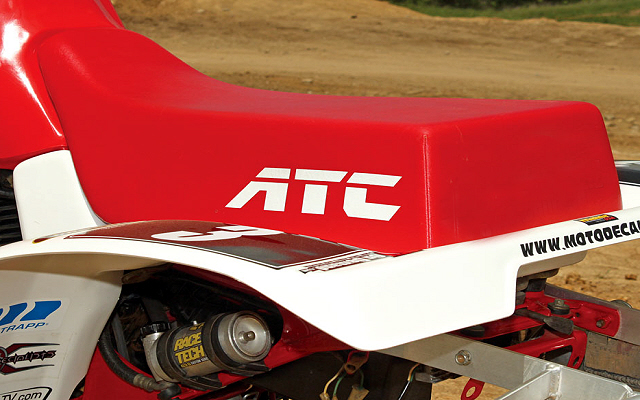ATV Tech: Let’s Talk Saddles
Let’s be honest, how often do we really stop to contemplate the seat on our ATVs? Perhaps we make a fleeting mental note of its comfort the day we straddle up on it on the showroom floor and then again the day the seat cover has finally worn through enough to show raw foam.
The fact of the matter is the seat is one of only three places our body makes contact with our quads (the others being the handlebars and the foot-pegs). It really doesn’t seem all that important until you imagine going for a long ride without one. In this article we’ll be taking a look at some of the cold hard facts and long forgotten wisdom surrounding your ATV’s seat.
Foam Isn’t Stone

Believe it or not the foam used to cushion your kiester isn’t immune to changes in the weather. Factors such as humidity, temperature and exposure to the elements can play a major role in how the foam feels. We’ve actually known riders to detach and store their seat in the house with them overnight before the following morning’s cold weather ride to keep the seat from feeling like a brick.
Cover Me
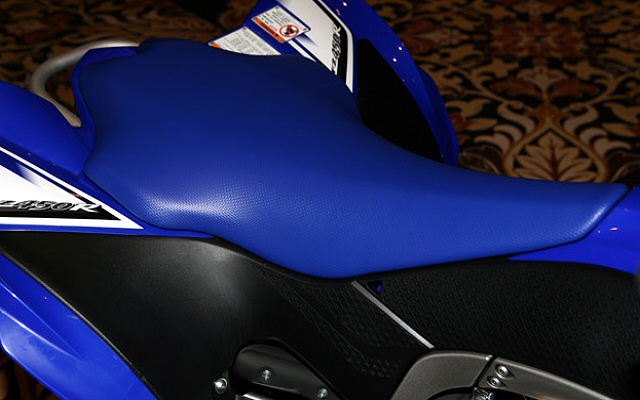
The seat covers that come from the factory are usually chosen to work for the greatest number of riders across the broadest range of conditions. Since the factory doesn’t know you, your butt or where and how you ride specifically, don’t be afraid to turn to the aftermarket if you experience problems like sliding around or premature wear on areas of frequent contact (like where your knees may rub on the sides).

Most covers are made of nylon or other synthetic plastics or rubber compounds designed to offer grip without being too abrasive. However, browse the aftermarket to get a feel for the idea that the stock cover is only the beginning of what can be accomplished in terms of traction. Dedicated rubberized gripper panels, small knobs, pleats, ribs and covers made of combinations of materials all exist to solve specific problems of staying put.
Humpday
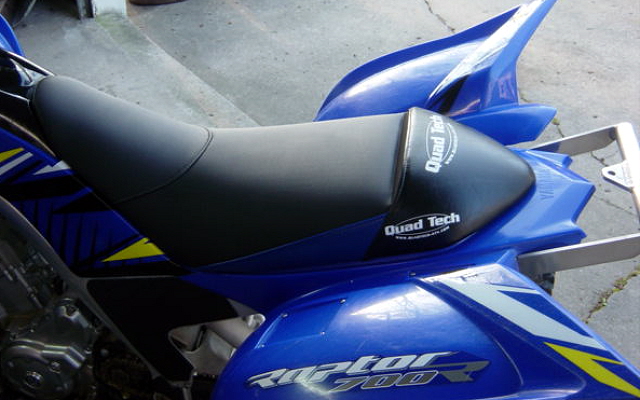
While it has largely fallen out of fashion these days, about half a decade ago the big trend in powersports racing was switching to seat foam humps. Like the name suggests, these were aftermarket seat foam packages that offered a fairly large bump just after the area where the rider would be positioned. The benefit? Sort of like having a back on your bar stool, the hump offered some resistance to slipping back and kept the rider positioned forward.
Breakdown
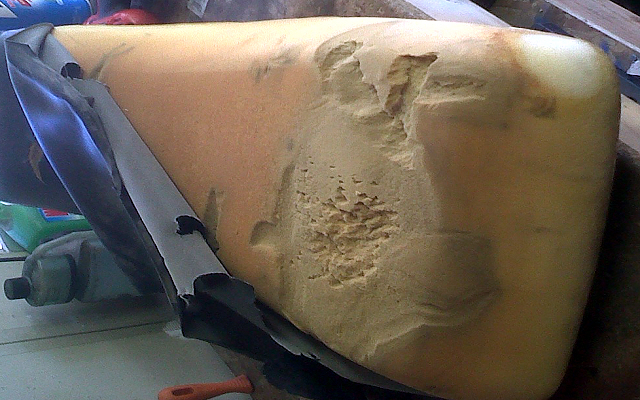
All seat foam eventually breaks down. Frequency of usage, original materials, and storage all play a role on how quickly or slowly this process happens and what’s especially troubling is that as it usually takes place over time, it can be tricky to realize it has happened at all. Feel the seat (right through the cover) for divots, soft spots and creases in the foam. If any of these are present or you can feel some of the plastic base pan coming through the foam, replace immediately.
Band-Aid

If you happen to rip your seat cover or it has simply worn through over time, the old backyard fix of covering the tear with duct tape is actually really smart thinking until you can install a replacement cover. The reason? Exposure to the elements common to off-roading (water, snow, dust) will accelerate the deterioration of the foam. A rip sealed early enough will require only replacement of the cover itself while one that is left open will likely demand both a new seat cover as well as replacement foam.
Construction
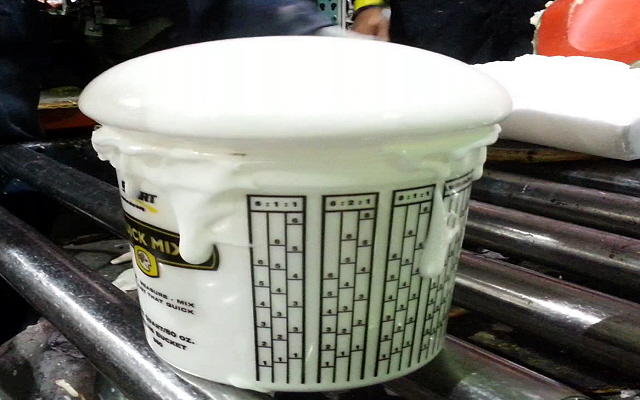
Ever wonder how they get the foam to confirm to those radical shapes that follow the lines and contours of the quad perfectly? The secret is injection molding- which is to say the foam actually enters a mold in liquid form then hardens up after its cured.
Extra Benefits

A lot of companies wisely used the foam of the ATV seat to offer additional rider protection across other areas of the vehicle where banging one’s body on hard plastic would be none-too-pleasant. Examples of this include dedicated lips at the front of the seat that travel up the gas tank or, as was the case of the Suzuki Quadracer line, seats that partially wrapped around the rear fenders to offer some protection to the backs of the thighs.
Customization Potential
Perhaps the most overlooked of all modifications concerning dialing in an ATV’s cockpit just so happens to be tweaking the seat foam. If a quad feels slightly too large for a given rider, particularly in the dimension between the seat and pegs, it is extremely easy to shave down the thickness of the foam to a more suitable seat height. Simply remove the seat cover and take off the foam one thin layer at a time using an electric carving knife (like grandpa uses to carve the Thanksgiving turkey). Once you’ve taken off enough to where it feels comfortable, simply reattach the seat cover using quarter-inch staples.

Conversely, we very often encounter cases of larger riders feeling slightly cramped on sport ATVs and the opposite of the above fix works wonders- Many companies offer over-sized/ taller seat foam. Sometimes going for this route requires switching to a larger seat cover as well if the stock material can’t be stretched over the additional foam but this one of the easiest and most affordable means we are aware of to make a once-cramped cockpit feel custom fitted to the rider.
